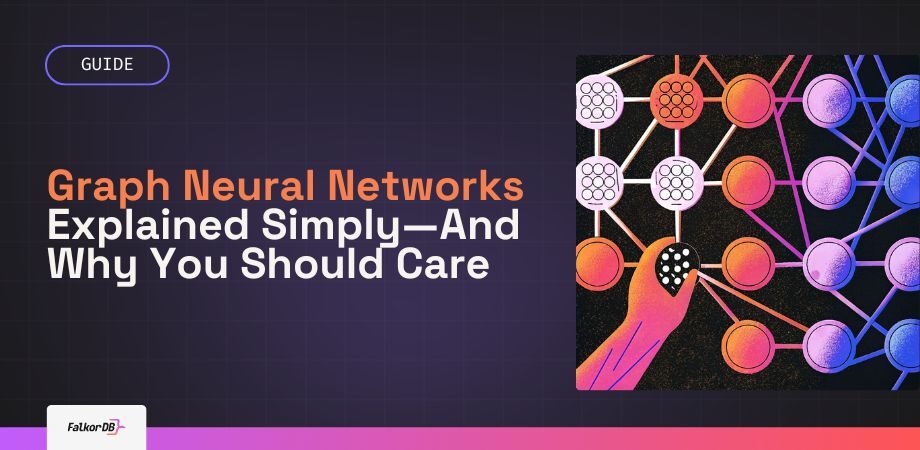- Graph Neural Networks enhance LLMs by providing structured graph context, improving accuracy in relational queries.
- Hybrid GNN-LLM architectures reduce query latency by up to 70%, ideal for real-time analytics.
- Complexity and bias in graph data pose significant integration challenges requiring careful pipeline management.
Integrating Graph Neural Networks (GNNs) with Large Language Models (LLMs)
Integrating Graph Neural Networks (GNNs) with Large Language Models (LLMs) combines structured graph insights with the generative abilities of language models. Frameworks like PyTorch Geometric (PyG) and Deep Graph Library (DGL) enable robust implementation of GNN algorithms, playing critical roles in hybrid LLM systems.
How GNNs Complement LLMs
GNNs specialize in capturing relationships within structured data, such as knowledge graphs, which traditional language models handle less efficiently. One practical integration involves generating node embeddings with GNNs to encode graph structures, enhancing context provided to an LLM:
- Node embeddings from a GNN trained on knowledge graphs encode relationships effectively.
- Embeddings are indexed into vector stores or fed directly to an LLM, supplying structured context in a simplified, manageable form.
For instance, a GNN trained on corporate policy knowledge graphs can encode relationships between entities such as departments, leave policies, or compliance standards. These embeddings significantly improve an LLM’s responses by injecting structured relational knowledge into natural language queries.
Detailed Use Cases
Enhanced Fraud Detection
Financial institutions leverage GNNs to model transactional relationships, identifying anomalous transaction patterns indicating potential fraud. By integrating LLMs, institutions contextualize anomalies with descriptive analyses, enhancing alert accuracy and reducing false positives.

Healthcare Insights
In healthcare, integrating patient relationship graphs with LLMs enables personalized treatment recommendations. For instance, GNN-derived embeddings of patient medical history and genetic markers are combined with LLM-generated recommendations for precise and personalized healthcare interventions.
Social Network Analysis
Social media platforms utilize GNNs to analyze complex user interaction graphs, identifying communities and influential users. LLM integration further provides insights into user behavior patterns, enhancing targeted marketing and personalized content delivery.

Practical Example: GraphRAG with FalkorDB
Graph Retrieval-Augmented Generation (GraphRAG) is a practical example of GNN-LLM integration. Using tools like LangChain and FalkorDB, developers create hybrid systems that blend LLM capabilities with precise graph-based retrieval.
Consider this scenario: An agent answers employee queries by combining textual policy information with graph-based insights. This setup enables handling complex questions like:
“Do we have special leave policies for cross-department projects?”
The agent queries FalkorDB via Cypher to find graph relationships between leave policies and departments, complementing textual policy retrieval.
Real-world Use Case: Recommendation Systems
Companies like Pinterest and Alibaba leverage GNNs integrated with language models to enhance recommendation systems:
- Pinterest reported a 40% improvement in recommendation accuracy by embedding graph-derived context into LLM prompts [1].
- Alibaba achieved a 3x query performance increase by using GNN-generated embeddings for product recommendations, significantly reducing latency [2].
GNN and LLM Hybrid Architecture
A hybrid system architecture typically involves:
- GNN preprocessing: Generate and store embeddings in vector databases.
- LLM querying: Retrieve relevant graph embeddings and textual data to answer user queries.
- Tool orchestration: Platforms like LangChain orchestrate interactions, abstracting the underlying graph operations.
Industry expert Matt Bornstein notes, “GNN-LLM integration significantly reduces latency by handling structured queries more efficiently, especially in complex recommendation scenarios” [3].
Summary: GNN Pros and Cons
| Aspect | Graph Neural Networks (GNNs) | Large Language Models (LLMs) |
|---|---|---|
| Strengths | Efficient relationship modeling, precise context | Strong natural language understanding and generation |
| Weaknesses | Sensitive to graph quality | Limited relational reasoning, risk of hallucinations |
| Use Case Fit | Structured, relational data tasks | Unstructured textual data, conversational interfaces |
How do Graph Neural Networks improve LLM performance?
What are common use cases for GNN-LLM integration?
Are there scalability issues with Graph Neural Networks?
Build fast and accurate GenAI apps with GraphRAG SDK at scale
FalkorDB offers an accurate, multi-tenant RAG solution based on our low-latency, scalable graph database technology. It’s ideal for highly technical teams that handle complex, interconnected data in real-time, resulting in fewer hallucinations and more accurate responses from LLMs.



